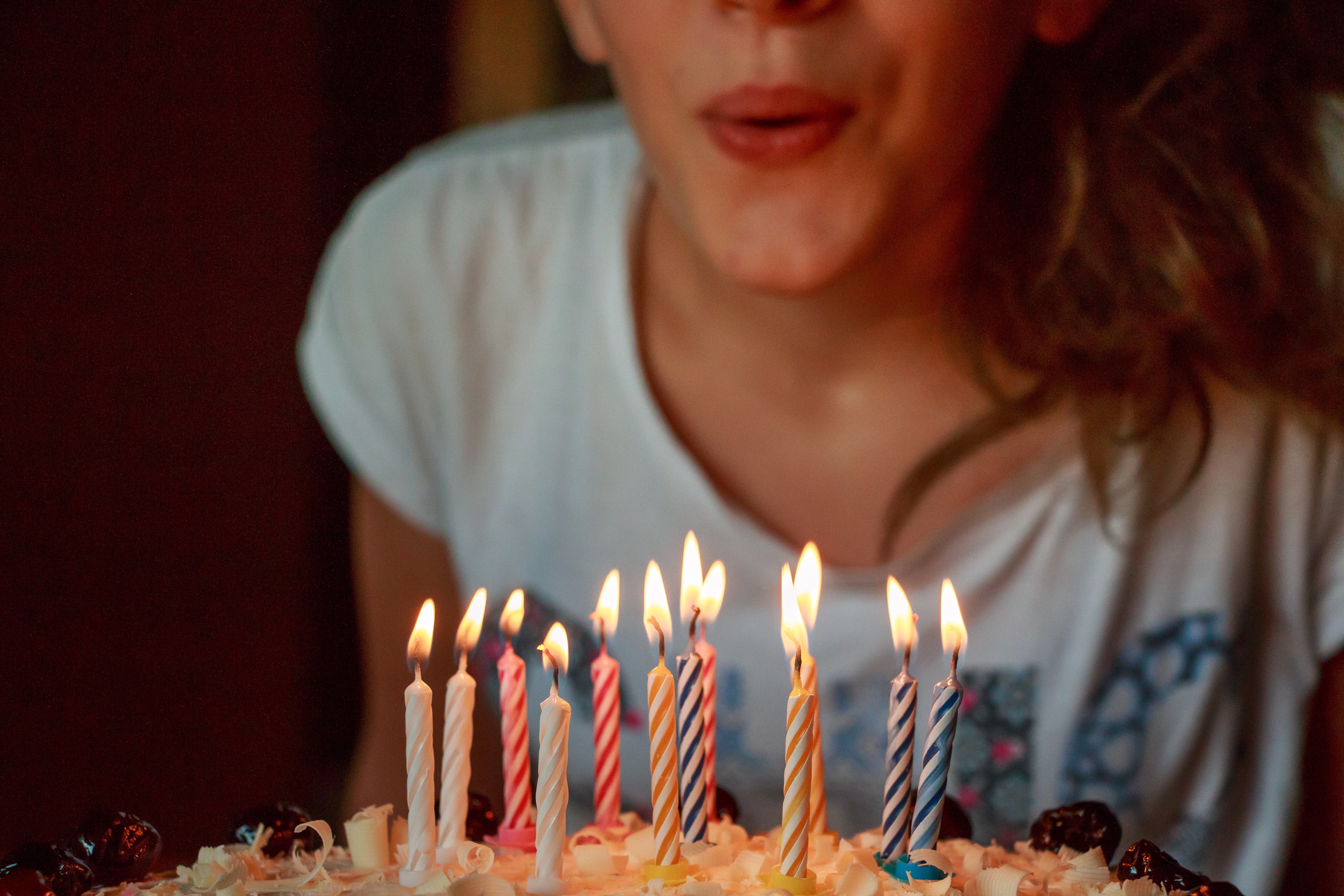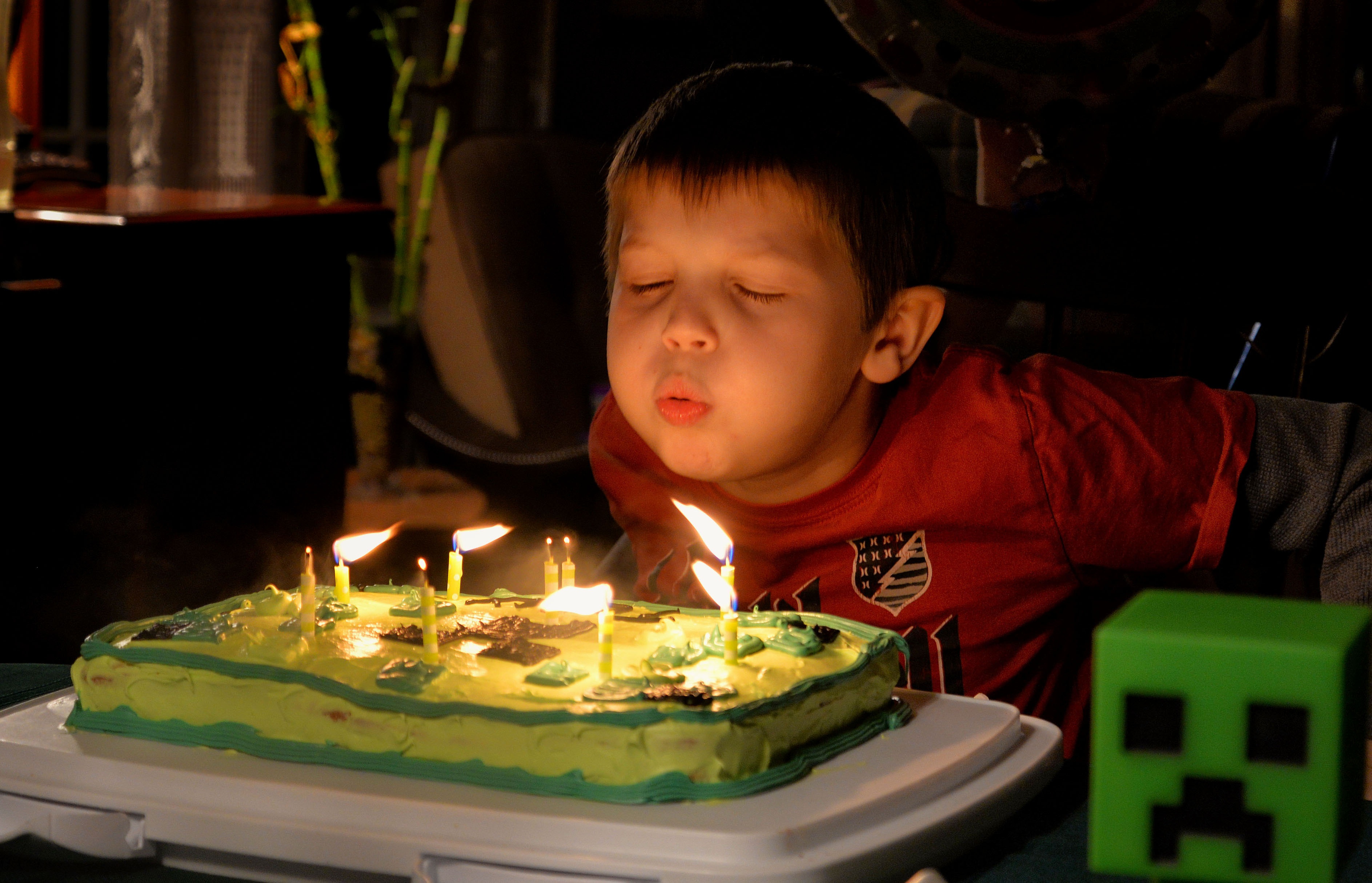Lesson 15
Riddles (optional)
Warm-up: Notice and Wonder: Birthday Candles (10 minutes)
Narrative
The purpose of this warm-up is to invite students to share what they know about people’s ages and to elicit the idea that ages are numbers that can be put on a number line. While students may notice and wonder many things in this context, it is important to highlight the candles correspond to ages and that the ages can be represented on a number line.
Required Preparation
- Create a number line from 0–100, marking intervals of 5, to display during the synthesis.
Launch
- Groups of 2
- Display the images.
- “What do you notice? What do you wonder?”
- 1 minute: quiet think time
Activity
- “Discuss your thinking with your partner.”
- 1 minute: partner discussion
- Share and record responses.
Student Facing


Student Response
For access, consult one of our IM Certified Partners.
Activity Synthesis
- “Without trying to count all the candles, do you have an idea about how old the first and second person might be?”
- “How old are some of the people that you know, including adults?”
- Select a few responses to locate and label on the number line.
- “Today, we are going to think about different people’s ages and make up addition and subtraction problems about ages. We’ll use our number line to represent and help us solve our problems.”
Activity 1: Kiran’s Age Riddles (15 minutes)
Narrative
The purpose of this activity is for students to leverage their previous work representing addition and subtraction problems on the number line to solve problems about the differences in family members’ ages. For each riddle, the previous answer is needed to solve. Students may use any strategy that helps them make sense of the problems in context.
Advances: Representing, Conversing
Required Materials
Materials to Copy
- Number Line to 100
Launch
- Groups of 2
- “Kiran wrote some riddles based on the ages of people in his family. Let’s solve them.”
- Give each student a copy of the blackline master.
Activity
- “Work with your partner to read each riddle carefully. You may use a number line if it is helpful.”
- “As you work, think about whether you are using addition or subtraction.”
- 10 minutes: partner work time
- Monitor for students who use a number line or write an expression or equation to show their thinking.
- Monitor for students who locate and label each family member's age and name on the number line.
Student Facing
Solve Kiran’s age riddles. Show your thinking. Use a number line if it helps.
-
I’m 7. My sister is 5 years older than I am. How old is she?
__________ years old
-
If you add 27 years to my sister’s age, you get my mom’s age. How old is my mom?
__________ years old
-
My brother is 24 years younger than my mom. How old is my brother?
__________ years old
-
My grandma is 53 years older than my brother. How old is my grandma?
__________ years old
-
My uncle is 21 years younger than my grandma. How old is my uncle?
__________ years old
-
My uncle is 33 years older than my cousin. How old is my cousin?
__________ years old
-
There is a 50 year difference between my grandpa’s age and my cousin’s age. How old is my grandpa?
__________ years old
Student Response
For access, consult one of our IM Certified Partners.
Activity Synthesis
- Invite previously selected students to share.
- “How did you know which strategy to use when you read a riddle?” (I thought about if the person was older or younger than the person before. That helped me decide if I should count on or count backwards.)
- “What other mathematical questions can we ask related to Kiran’s family’s ages?”
- Share and record responses. Keep them displayed for the next activity.
- Suggest a few of the following if needed:
- “If Kiran’s sister and brother have their birthday party together, how many candles do they need?” (27: \(12 + 15\))
- “How much older is Kiran’s grandma than his grandpa?” (4: \(68-64\))
- “How many years ago was his mom Kiran’s age?” (32: \(39-7\))
Activity 2: Write Riddles (20 minutes)
Narrative
The purpose of this activity is for students to write their own number riddles involving people’s ages. Keep the mathematical questions from the synthesis displayed for students if they need ideas for riddles.
Supports accessibility for: Conceptual Processing, Organization
Required Materials
Materials to Copy
- Number Line to 100
Launch
- Groups of 2
- Give each student a copy of the blackline master.
- “We’re going to make up our own age riddles to share with each other. Can you think of someone between 1–9 years old, someone between 10–19 years old, and someone who is 20–39 years old? Older than 40?”
- 30 seconds: quiet think time
- 1 minute: partner discussion
Activity
- “You will use people you know and their ages to come up with mathematical questions to ask your partner. If you don’t know the person’s age for sure, make a good estimate to use.”
- “You can use Kiran's riddles to help. You can locate the age of each person you plan to use on your number line if it helps you plan your questions.”
- 5 minutes: independent work time
- 30 seconds: quiet think time
- “Take turns asking questions. When your partner asks you a question, record your thinking using a number line or equation.”
- 10 minutes: partner work time.
- Monitor for students who come up with something different than the questions presented in the previous activity.
Student Facing
- Complete the table by writing down 4 people you know with different ages.
person's first name age (years) -
Come up with 3 mathematical questions to ask your partner.
Question 1:
Question 2:
Question 3:
- Solve your partner's riddles. Show your thinking using a number line or equation.
Student Response
For access, consult one of our IM Certified Partners.
Activity Synthesis
- Invite previously selected students to share.
- “Did you find any problems that were challenging to solve? What made it challenging?”
Lesson Synthesis
Lesson Synthesis
“Today we worked to write, represent, and solve real-world problems about ages.”
“How could you explain to a friend how they could take some ages and make up their own addition and subtraction problems?”
“How would you suggest they solve them?”